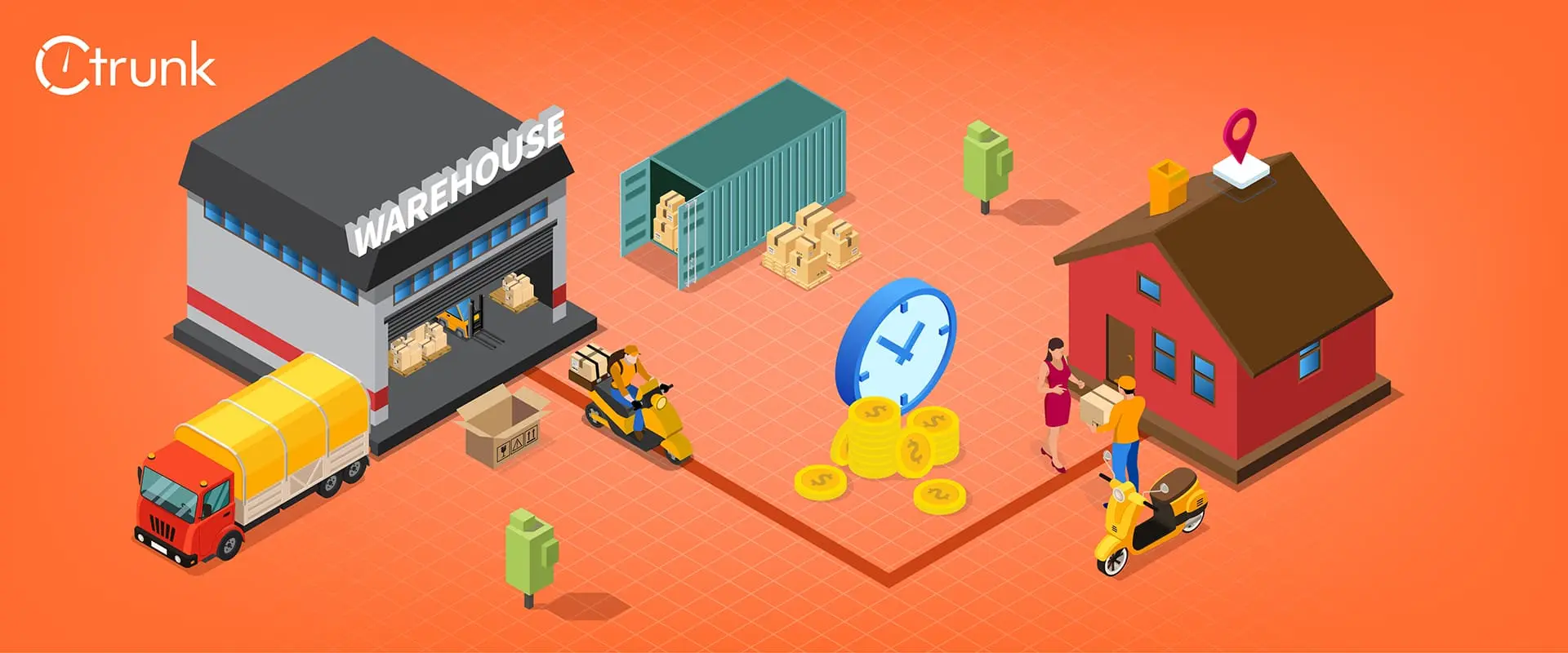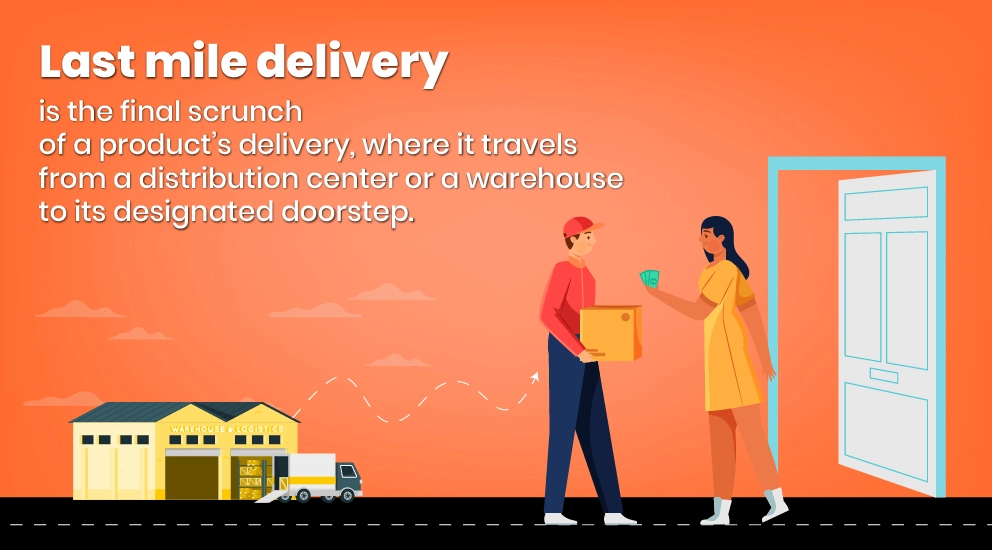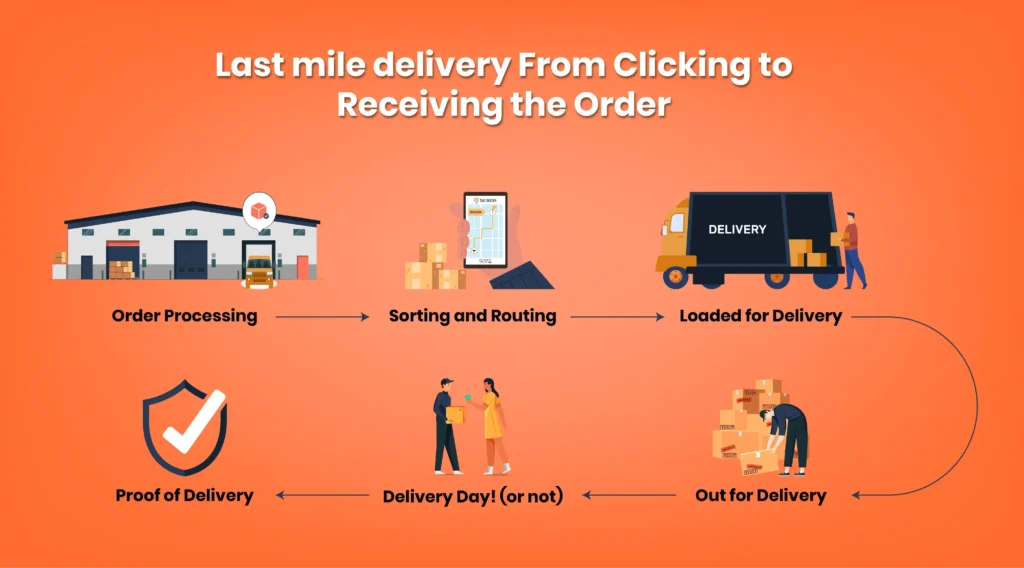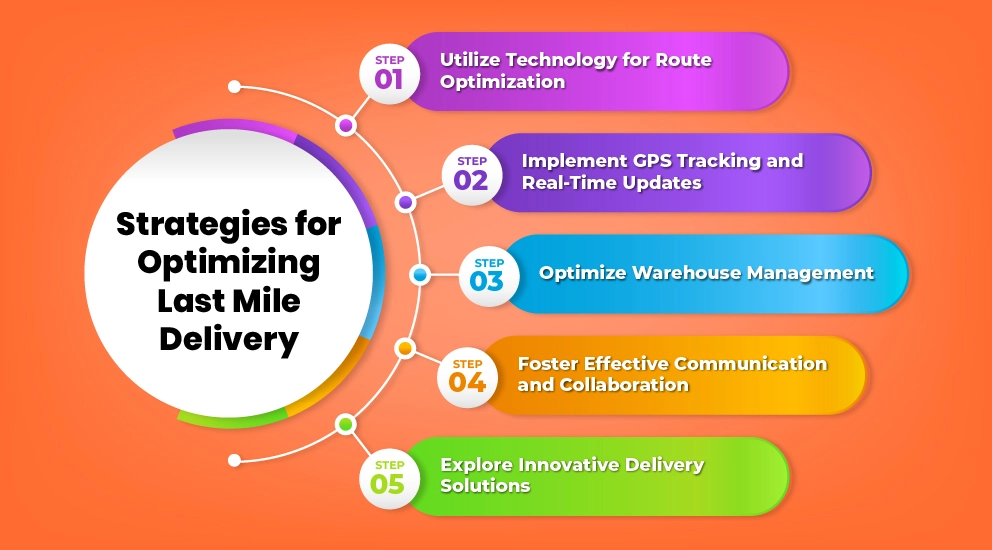Top 7 Strategies for Courier Services Advertising!


It’s the moment of truth. You’ve optimized your online store, processed the order with lightning speed too. Your end customer now waits for their order to arrive. But the work isn’t done yet! The ‘last-mile’ – the critical stretch from the storage warehouse to the customer’s doorstep – is the journey where many expectations are set – and frankly – broken.
Last mile delivery, though it seems simple, is surprisingly complex. Who knew that delivering a parcel or luggage could be ‘complex’? Simplifying this journey is crucial. According to a study by Gartner, 50% of supply chain organizations will invest in apps that support AI & advanced analytics features for the betterment of the supply chain & logistics solutions. It’s a hefty change! Where customers crave speedy and transparent deliveries today, mastering last mile logistics is no longer a luxury – it’s a necessity.
In this definitive blog, we’ll be diving deep into the world of last mile deliveries. We can explore the challenges, describe the solutions and more.
Your favorite gadget which you’ve been eyeing for quite a while now – has finally arrived at the warehouse. After this update on your phone, you rejoice when it is ready to be shipped. Exciting right? But before you can celebrate – your parcel will have to cross one last hurdle, which is Last Mile delivery.

Last mile delivery is the final scrunch of a product’s delivery, where it travels from a distribution center or a warehouse to its designated doorstep. It could be a home, a store or even a locker. You might think that these distances are short – but there are numerous and most expensive factors playing a part in the play.
Delivery trucks get stuck in traffic just like everyone else. But unlike bulk delivery trucks which mostly go on highways – the last mile trucks travel in congested urban/rural areas and this affects their efficiency. According to Oracle survey, 58% people say that they would stop buying from a platform entirely if there were repeatedly 1 to 3 delayed deliveries. Traffic congestion is a common problem for many companies, and many suffer because of it too.
Deliveries aren’t always evenly divided. Urban areas with a higher number of people living there can overwhelm the delivery partners and tight delivery windows become hard to meet.
Not everyone is at home when the delivery partner comes knocking! Failed deliveries and re-delivery attempts are significant costs and frustration for both businesses and customers. According to a study, 12% to 60% of failed deliveries happened because the customer was not at home for a long time.

So, you place the order and wait for it to arrive. But what happens behind the scenes to get the package from the warehouse to you? Here’s a brief breakdown:
➔ Order Processing: Your order triggers activities at the warehouse. The business team locates, picks and packs your items.
➔ Sorting and Routing: The team sorts the packages and assigns delivery routes based on destination and efficiency. Software algorithms also play a very important role in optimizing these routes.
➔ Loaded for Delivery: Your package is loaded onto a delivery truck.
➔ Out for Delivery: The driver goes onto the decided route, is given a manifest with detailed info of all the deliveries per day. Many companies also offer real-time tracking – so you can follow your package’s progress.
➔ Delivery Day! (or not): The driver comes to your doorstep and successfully gives you your package. But, if you are not at home, then it’s a whole another scenario.
➔ Proof of Delivery: Once you receive your package, you will be asked to sign a digital or a physical document confirming delivery.
For businesses in the ecommerce age, Last mile delivery is the final finish line – where customer satisfaction is won or lost. Let’s have a look at some of the hurdles that your delivery faces:
Mapping the most efficient route for multiple deliveries might sound simple, but it’s a complex puzzle. Finding the right balance between minimizing distance, adjusting to traffic and making sure that deliveries are made on time – is a constant juggling act. Traditional methods wouldn’t care about real-time factors and this is what would lead to inefficiencies and frustrated customers. On average, a study found that businesses who optimize their performance with routing software can reduce fleet operating costs by 10-30%.
Urban areas are nothing less than a double-edged sword for e-commerce and last mile deliveries. While they have a high volume of customers, notorious traffic congestion is also a huge problem. Unpredictable road conditions, accidents and rush hour can create chaos for delivery schedules and make it difficult for meeting tight delivery schedules.
Last mile delivery is a race against the clock. With multiple stops and tight delivery windows, every minute counts. But, when there are factors like inefficient route planning, traffic delays or more – a driver can find it hard to maximize deliveries in a designated timeframe.
Incomplete or inaccurate addresses by customers can turn a simple delivery into a frustrating treasure hunt. When a delivery driver navigates an apartment complex with wrongly written building numbers – he finds himself in a fix amongst gated communities. Clear and accurate addresses are crucial for efficient last mile delivery.
The safety of both the drivers and the packages is a top priority. Deliveries can happen in night, in unfamiliar neighborhoods or involving valuable items. Companies should implement strategies for driver safety and minimize theft situations or package tampering.
Holidays – a time where everyone rejoices and relaxes. But not the delivery networks. Most people order during the holidays and this sudden surge in orders – strains resources. Longer delivery times and frustrated customers happen a lot. When you have a scalable last-mile strategy – your courier business can easily adapt to fluctuating order volumes.
These challenges are not insolvable. By understanding the complexities of last mile delivery, businesses can explore innovative solutions and tech to streamline operations, routes and ensure a smooth delivery experience.
Optimizing the last mile delivery is crucial for efficient and timely package arrival. By implementing various strategies and leveraging tech, businesses can streamline their logistics operations. The overall customer experience too is enhanced. There are some key strategies which can be employed for optimizing last mile delivery.

Technology plays a vital role in optimizing last mile deliveries. Logistics companies utilize route optimization software which plans efficient routes for their drivers. Factors like traffic, delivery windows and customer preferences should also be considered. By optimizing routes, business minimize mileage and reduce fuel consumption. Per driver deliveries increase – and this in turn leads to significant cost savings and improved efficiency.
GPS Tracking enables real time monitoring of delivery vehicles and provides valuable insights into their current locations as well as status. By sharing this info with their customers, customers can offer smart updates about their customer’s reliable updates and transparent solutions. Businesses can also proactively address delays based on the mile delivery process.
Warehouse management is crucial for a seamless last mile delivery. By adding a warehouse management system and implementing proper inventory management techniques, businesses can seamlessly streamline their orders and minimize errors as well.
Effective communication and collab amongst all stakeholders involved in the last mile delivery process is essential. Clear lines of communication and sharing relevant information, businesses can address issues promptly. Any unforeseen challenges and a smooth delivery experience for customers is guaranteed with good courier management software.
Advancements in tech are the best innovative delivery solutions that people have seen. Businesses now can explore alternatives to traditional delivery methods and use autonomous vehicles, drones or crowd shipping platforms. These solutions can help with improving delivery efficiency and customer satisfaction.
| Trends | Description |
| Internet of Things (IoT) | Used to improve inefficiencies, reduce costs and provide end-to-end visibility. |
| Artificial Intelligence (AI) | Can optimize operations, streamline workflows and upskill staff in logistics operations. |
| Robotics | Reduce labor costs for logistics operations and improve errors. |
| Last Mile Delivery | Faster and flexible delivery options |
| Warehouse Automation | automating warehouse operations and reducing errors. |
| Blockchain | Reducing supply chain disruptions and enhance supply chain transparency and traceability. |
| Big Data and Analytics | Analytics for optimizing resource utilization, implementing contactless delivery and improved order tracking. |
| Autonomous Vehicles (AVs) | Improves transportation costs. |
| Elastic Logistics | Elastic logistics is a trend in logistics that can increase operational efficiencies and boost workforce capacity. |
| Green Logistics | Reduces the environmental impact of logistics operations. |
| Supply Chain Resilience | Agility and flexibility of Value chains is improved and can better respond to disruptions. |
| Shipment of Refrigerated Goods | Refrigerated goods for meeting growing demands. |
| Modern Integration Technology | Upgrading legacy environments and a modern integration platform for quick on-boarding of customers, trading partners and suppliers. |
| Re-Optimized Service Lines | Delivery KPIs are taken into account while also keeping costs in check. This is done to solve the complexities of supply chain. |
| Integrated 3PL Services | 3PL services means heavy trucking assets, freight brokerage capacities and warehouse services for meeting growing demands of customers. |
| Logistics Automation Trends | Connecting ecommerce stores with logistics automation through API integrations. |
| Globalization | Globalization is a trend in logistics that focuses on achieving delivery KPIs while keeping logistics costs in check by recognizing that no single solution to the complexities of the supply chain exists. |
| Cloud Computing | Flexible and dynamic communication methods between various teams in the supply chain. |
While these innovations in last mile delivery offer immense potential. But they also come with their own set of challenges. Regulatory frameworks, safety concerns and public acceptance are some of the hurdles which can be solved – for successful last mile delivery. This article has provided a comprehensive guide to last mile delivery and explored the concept and strategies for last mile delivery optimization. With the latest tech and practices, you can definitely provide a seamless experience to your customers.